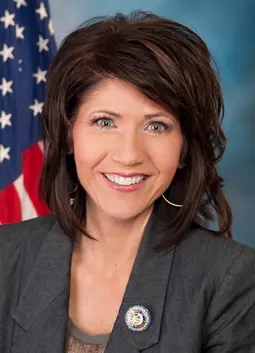South Dakota finds itself in an unprecedented fiscal situation as state revenues surpass expectations, yet the administration led by Gov. Kristi Noem and the legislature continue to prioritize a conservative budget approach, hinting at potential spending cuts. While the specter of extreme budget reductions akin to the post-great recession era—where state agencies slashed their budgets by ten percent—looms, the state reassures that the current fiscal constraints are not as severe.
Jim Terwilliger, the seasoned Commissioner of the Bureau of Finance and Management, reflects on the state’s financial standing with insight derived from previous fiscal challenges. Comparing the current circumstances with those during the great recession, Terwilliger emphasizes the distinctive nature of today’s financial landscape in South Dakota.

Kristi Noem
“It’s not near that level, from my perspective,” Terwilliger stated, addressing concerns about the severity of the proposed budget cuts. Unlike during the recession, South Dakota employed federal stimulus funds from the COVID-19 relief packages differently. “We’re in a different situation now, where the federal money we didn’t use to plug any state budget gaps,” Terwilliger noted. “We used it, really, for one-time infrastructure investments. The facts are different. We’re just facing a little softness in our revenue right now.”
The state’s financial strategists consistently monitor two primary revenue streams: ongoing and one-time funds. The drop of about $30 million in ongoing state revenues, including sales tax and contractors excise tax collections, casts a sobering effect on fiscal planning.
Rep. Tony Venhuizen, R-Sioux Falls, echoes this caution. “Since the governor’s budget address, we’ve had two more months of revenue come in, and really nothing that would make me a lot more optimistic about what our projection would be,” he mentioned. This fiscal prudence is reflected in Gov. Kristi Noem’s proposal to trim several ongoing expenses, including those related to the South Dakota Public Broadcasting’s budget, the state library, and building maintenance.
A unique component of this year’s budget revolves around a surge in one-time funds driven by an unexpected influx of unclaimed property—approximately $300 million, triple the usual figure. Nathan Sanderson from South Dakota Retailers expressed it as, “It’s highly unusual to see this level of one-time money, compared to a lower amount of ongoing funds.”
Unclaimed property, for context, involves assets that remain dormant for three years, subsequently transferred to the state’s custody. Sanderson speculates that residual federal COVID stimulus allocations might explain the windfall. “If we think about it — we’re in 2025 now. Three years ago was 2022. I think we’re still seeing a lot of that COVID money in the unclaimed property sphere,” he observed.
The leveraging of this one-time revenue offers avenues for ambitious projects, such as the proposed replacement of the men’s prison near Sioux Falls. However, this strategy carries its own set of liabilities, dictated by the legal obligation to return these unclaimed properties to their legitimate owners upon their emergence.
South Dakota State Treasurer Josh Haeder emphasizes that, “Even if the Legislature spends it, or we spend it on our budget, it is still claimable and is returned to somebody else when they come forward.” Presently, South Dakota holds $1.2 billion in unclaimed property, an untapped reservoir not accruing any financial interest.
Haeder proposes the creation of an unclaimed property trust fund as a viable solution to this predicament. “What we’ve talked about is an unclaimed property trust fund,” Haeder explained. “And really, what that would say is all of the money that comes in—once we’ve made our best effort to return it—and we return those dollars… what is not returned goes into a trust fund that is managed by the South Dakota investment council.” This innovation could potentially generate an annual revenue stream of $40 million to $70 million, offering a buffer in a fiscal landscape marked by dipping ongoing revenues.
The predictability offered by such a trust fund appeals to lawmakers as they navigate the complexities of tightening budgets amidst economical uncertainties. State governance in South Dakota remains exemplary in its steady commitment to ensuring fiscal responsibility, aligning one-time investment opportunities with long-term financial strategies.
As discussions evolve, the financial fabric of South Dakota stitches itself across both anticipated revenues and unexpected fiscal opportunities from unclaimed properties. This dual approach ensures the state continues to map a prudent and innovative course through its budgetary challenges, illustrating an uncommon but significant paradigm in fiscal management.
In conclusion, as the state leverages the surge in unclaimed property dollars while vigilantly managing ongoing revenue streams, South Dakota moves forward with its eyes keenly set on crafting a sustainable economic blueprint that secures its future. This balancing act of pragmatism and foresight defines the state’s current fiscal narrative, marking South Dakota’s enduring pledge towards fiscal integrity.
